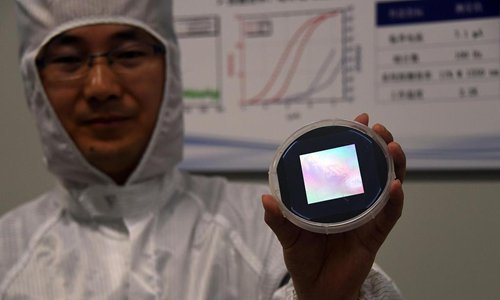Here the global times news on the same subject via JSCh
CAS shatters super-res record with latest lithography equipment
Source:Globaltimes.cn Published: 2018/11/30 2:34:10
A researcher shows a device produced with the lithography equipment on November 29. Photo: VCG
Researchers with the Chinese Academy of Sciences (CAS) in Southwestern China's Sichuan Province announced their latest breakthrough after setting a new world-record in lithography resolution nanotechnology on November 29, Xinhua News Agency reported.
Vice-Director Hu Song said the breakthrough shatters traditional research methods by creating new pathways in nanometer optical lithography technology, and China now owns the complete intellectual property rights.
Researchers developed lithography equipment that can produce 10-nanometer chips with double exposure technology.
The tests achieved a world record-setting resolution at 22 nanometers developed by researchers with the Institute of Optics and Electronics at CAS.
Scientists at the Technical Institute of Physics and Chemistry said the project establishes a new research direction in the development of high-resolution and large-scale nanometer lithography equipment, surpassing intellectual property barriers set by foreign countries.
Lithography equipment is essential for chip manufacturing, a sector China is now beginning to emerge.
Higher lithography resolution allows increased chip integration levels; while it is hard to increase resolution through traditional lithography technology due to the optical diffraction effect.
Reports said the super-resolution optical lithography equipment has already proven effective in projects at universities and institutions like Shanghai Academy of Spaceflight Technology, University of Electronic Science and Technology of China, West China Hospital and Shanghai Institute of Microsystem and Information Technology.


